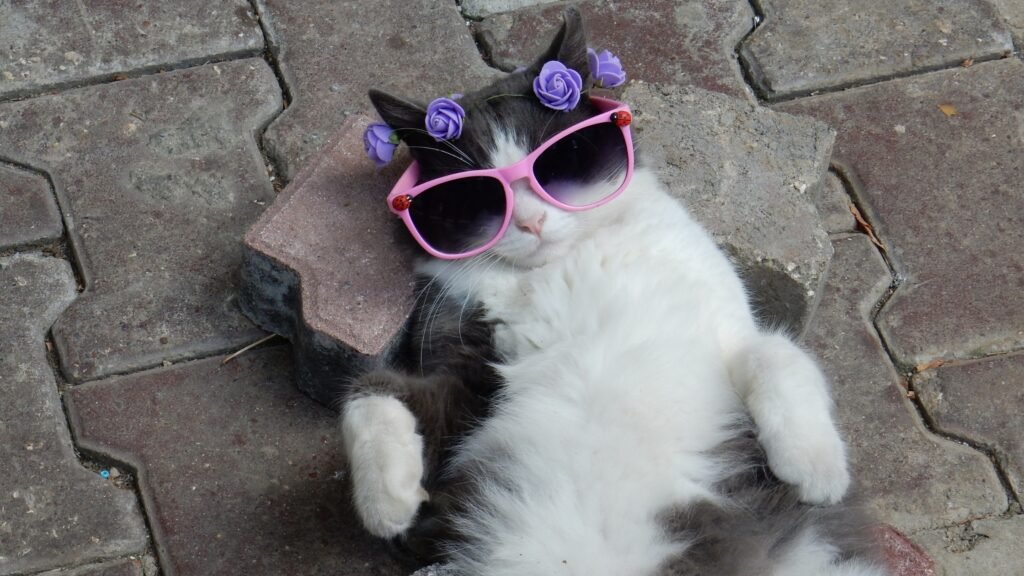






Cats are intelligent, independent, and often mysterious creatures, but understanding their behavior is essential for a harmonious relationship between you and your feline friend. From excessive scratching and litter box problems to aggression and meowing, knowing why cats behave the way they do can help you find effective solutions to their most common issues.
This guide will explore common cat behaviors, their meanings, and proven solutions to help pet owners manage, correct, and understand feline behavior.

Cats communicate primarily through body language, vocalization, and habits. While some behaviors are natural, others may indicate stress, medical issues, or environmental triggers. Learning to interpret and address these behaviors ensures that your cat is happy, healthy, and well-adjusted.
✔ Strengthens the bond between cat and owner
✔ Prevents behavioral problems from worsening
✔ Helps identify underlying health issues
✔ Creates a stress-free environment for your pet
Litter box issues are one of the most frustrating behaviors for cat owners. If your cat is urinating or defecating outside the litter box, it may be due to:
🚨 Medical Problems – Urinary tract infections (UTIs), kidney disease, or constipation.
🚨 Dirty Litter Box – Cats are clean animals and may refuse to use a dirty box.
🚨 Litter Preference – Some cats dislike certain textures or scents in litter.
🚨 Stress or Anxiety – A new pet, moving homes, or changes in routine can cause avoidance.
✅ Solutions:
🐾 Keep the litter box clean and scooped daily.
🐾 Use unscented, clumping litter with a soft texture.
🐾 Place litter boxes in quiet, accessible locations.
🐾 If issues persist, consult a veterinarian to rule out medical causes.
Golden Rule: One litter box per cat, plus one extra in multi-cat households.

Some cats are naturally more vocal, but excessive meowing can indicate hunger, loneliness, attention-seeking, or medical issues.
🚨 Hunger or Thirst – Your cat may be asking for food or fresh water.
🚨 Loneliness or Boredom – Cats need mental stimulation and may meow to get attention.
🚨 Old Age & Cognitive Decline – Senior cats may meow excessively at night due to confusion.
🚨 Pain or Discomfort – Illness or injury can cause increased vocalization.
✅ Solutions:
🐾 Stick to a feeding schedule to avoid food-related meowing.
🐾 Play with your cat daily to reduce boredom.
🐾 Provide a cozy, safe sleeping area for senior cats.
🐾 If meowing is excessive, visit a vet to rule out health concerns.
Aggressive behavior in cats can be scary and confusing. It can stem from fear, territorial disputes, overstimulation, or past trauma.
🚨 Fear Aggression – Triggered by loud noises, sudden movements, or unfamiliar people.
🚨 Territorial Aggression – More common in multi-cat homes when a cat feels their space is threatened.
🚨 Play Aggression – Young cats may bite and pounce excessively during playtime.
🚨 Redirected Aggression – A cat may lash out at a person or pet after seeing an outdoor animal through a window.
✅ Solutions:
🐾 Identify the trigger and remove the source of stress.
🐾 Do not punish aggression – this increases fear.
🐾 If play aggression is an issue, redirect energy into toys rather than hands.
🐾 Use slow introductions when bringing a new pet into the home.
🐾 In extreme cases, consult a feline behaviorist or vet.
Tip: Use pheromone diffusers (like Feliway) to promote a calming environment.
Read more : Pet Anxiety Solutions: Expert Tips to Calm Your Furry Friend
Scratching is a natural feline behavior used to mark territory, sharpen claws, and stretch muscles. However, when it becomes destructive (furniture, carpets, walls), it’s important to redirect this instinct appropriately.
🚨 Lack of Scratching Posts – Cats need designated scratching areas.
🚨 Boredom or Anxiety – Destructive behavior often signals stress or excess energy.
🚨 Marking Territory – Cats use scratching to leave scent markers in their space.
✅ Solutions:
🐾 Provide multiple scratching posts or pads (vertical & horizontal options).
🐾 Use double-sided sticky tape or furniture covers to deter scratching.
🐾 Apply catnip or treats to scratching posts to encourage use.
🐾 Trim your cat’s nails regularly or consider soft nail caps.

Does your cat run wildly around the house at night? This is a common behavior known as “zoomies“, often caused by pent-up energy, hunting instincts, or an inconsistent routine.
🚨 Hunting Instincts – Cats are nocturnal hunters and may become active at dusk.
🚨 Lack of Play During the Day – If your cat sleeps too much during the day, expect more energy at night.
🚨 Hunger or Empty Food Bowl – Some cats get extra active before feeding time.
✅ Solutions:
🐾 Play with your cat before bedtime to burn off energy.
🐾 Feed a small meal before bedtime to keep hunger at bay.
🐾 Provide interactive puzzle toys for mental stimulation.
🐾 Use blackout curtains to reduce outside distractions.
Read More :- Persian Cat Food Guide: Top Picks and Nutrition Secrets
Cats communicate through subtle body signals. Learning to interpret them helps avoid misunderstandings and unwanted behaviors.
✔ Tail Upright & Relaxed – Happy, confident cat.
✔ Ears Forward – Curious, interested.
✔ Slow Blinking – A sign of trust and affection.
✔ Tail Puffed & Arched Back – Scared or defensive.
✔ Lashing Tail – Frustrated or overstimulated.
Tip: If your cat is showing signs of irritation, give them space rather than forcing interaction.
Understanding cat behavior requires patience, observation, and consistent positive reinforcement. Many common cat behavior issues stem from environmental factors, stress, or health concerns, so identifying the root cause is key to finding the right solution.
✔ Litter box issues? Keep the box clean and stress-free.
✔ Excessive meowing? Check for hunger, boredom, or health issues.
✔ Aggression? Identify triggers and remove stressors.
✔ Scratching furniture? Provide scratching posts and encourage proper use.
✔ Zoomies at night? Increase playtime before bed.
With understanding and proper training, you can create a happy, stress-free home for your cat.
Fear, pain, or territorial disputes may cause aggression. Identify triggers and give them space.
Provide scratching posts and use deterrents like double-sided tape on furniture.
Excessive meowing could be due to hunger, boredom, or health issues—always check with a vet.
Keep it clean, use the right litter, and place it in a quiet location.




